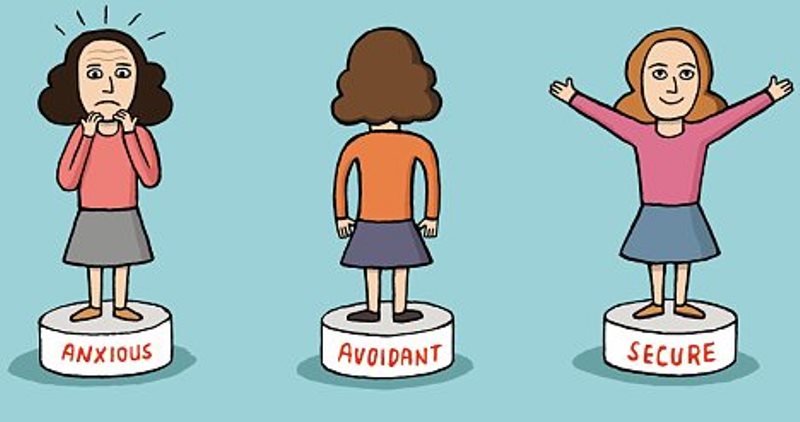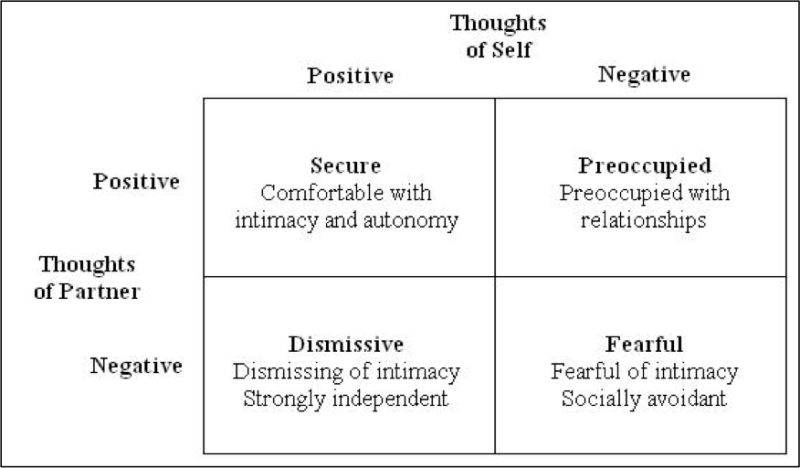It is time to move out of the fog.
Have you been with a partner who is very loving one moment and pulls away immediately after?
Have you experienced intermittent spells of attachment and detachment in your relationship, without no conceivable reason?
Have you perceived a strange pattern of ‘separateness’ infiltrate your ‘togetherness’?
Suggested read: How to set boundaries in a relationship
If this sounds all too familiar, you might be trapped in a relationship wherein an avoidant attachment style is operative.
Image source: Shutterstock
An avoidant relationship is one plagued by a subconscious fear of intimacy and attachment. It has an inherent defensive shield of protection held up by the avoidant and thereby, has him/her vacillating between the troughs and crests of attachment. Oftentimes, an intrinsic distrust of their partner is noted, which is rooted in a fear of being left alone if they show their vulnerability.
There are two avoidant types – the dismissive-avoidant and the fearful-avoidant. Whilst both share their subconscious fear of intimacy, the difference between the two is that the former tends to value his/her self-sufficiency and independence to an inflated degree. The dismissive-avoidant thinks of ‘needing others’ as a sign of weakness and dismisses any feelings of attachment as a signal of being tied down. Their fear of intimacy fuels their inflated sense of esteem and they have rejected/denied themselves every possibility of participating in an emotionally wholesome, close relationship. A dismissive usually has an incomplete story of an idealized love which was lost/never realized and as such, they hold that standard as a defensive weapon against anybody who tries to inch closer. The painful memory of their idealized previous relationship that never quite saw its rightful ending makes them tire of a real relationship fairly quickly and they refuse to give it the emotional involvement it demands. This distancing trick enables them to keep ‘real intimacy’ at bay and they are happy, in deluding themselves with the belief that nothing can measure upto ‘the one’ that never became.
Image source: Google, copyright-free image under Creative Commons License
On the other hand, the latter type of avoidant, the fearful-avoidant hasn’t quite given up. A fearul-avoidant is equally fearful of intimacy and shares the inherent distrust of caregivers, not unlike his sibling. Yet, he/she hasn’t quite armed himself/herself with the armor of self-esteem that allows their sibling to do without attachment. As such, the fearful-avoidants tend to be more open and susceptible to attachment in response to their need and want for intimacy, but are prone to spells of detachment owing to a resurfacing of their fears. This is called an approach-avoidance conflict that results in an intimacy-withdrawal cycle leading to a circling pattern. This pattern is very common in fearful-avoidants and as such, one finds them engaging in short-lived relationships. The series of short relationships stem from their inherent need for intimacy but is ended equally quickly as the fearful-avoidant deems their partner more and more threatening when they get closer.
Suggested read: Here’s how you can set boundaries in a codependent relationship
So, how does one break free of such an unhealthy attachment style in their relationship? Watch out for the following symptoms and then address them accordingly:
1. Avoiding interpersonal communication/engagement: If fear of rejection, criticism or even inadequacy is causing one to distance self from one and all, it is cause enough to fret.
2. Unwillingness for social participation: Most avoidants tend to avoid any activities that call for too much proximity to ‘people.’ Unless they are definitely sure about approval or being liked, they tend to avoid social events/activities and steer clear of them.
Image source: Shutterstock
3. Preoccupation with rejection, loss or ridicule: This preoccupation can become an obsession. It is important to differentiate social anxiety from avoidant traits. While there are many similarities, presence of other ‘red flags’ in conjunction to these can help decipher the boundary. Clinicians can help discover the underlying patterns and assess the situation.
4. Inhibited or fearful involvement/attachment: Pulling away, distancing, stonewalling, withdrawal, isolation or even plain attempts to introduce negative elements (like insecurity) into the relationship are behaviors that stem from a fear of emotional attachment/vulnerability/intimacy.
Suggested read: Are you in an unhealthy relationship? Here are the signs to look out for
5. Secrecy and ambiguity: To maintain their own heady feeling of independence or even feed their fear of intimacy, avoidants tend to be snuggling in their own shell, refusing to open up. They have a tendency to keep secrets and leave things foggy. This creates cracks in the relationship, soon widening into rifts that break it up. This serves their fear in good stead, reassuring them of the dangerous nature of intimacy and that they do well to avoid it.
6. Avoiding emotional vulnerability: When all doors for a heart-to-heart are closed or even mere mention of any ‘talk’ that aims to probe deeper is met with a rebuttal, anger, inchoate responses, retaliation or plain withdrawal, one needs to address the elephant in the room.
Image source: Shutterstock
7. Avoiding physical intimacy: Not wanting to share the same bed, avoiding any form of physical contact, when clubbed with other signs are reasons for worry.
These deactivating strategies/distancing behaviors are noted to be a longstanding pattern of character traits that have arisen over time. Research points out that there is no singular reason for the same, but a combination of environment and biological factors have been cited. As such, it is important to understand that in the absence of a concrete tangible to be addressed, each avoidant has to be dealt with as a distinct case. Therefore, whether an avoidant deals with his/her fear via inchoate rage/tantrums or complete isolation, each pattern has to be examined and then, dealt with accordingly. The best way of absolving fears that gnaw at the being of avoidants is to help cleanse and purge them slowly. The most effective way of doing it is to promote interpersonal communication.
Image source: Shutterstock
The initial realization, acknowledgement, and acceptance are the most difficult hurdles to cross. Avoidants shall never accept their internal fears, therefore getting them to open up can be quite a herculean task. Professional help is advisable. The counselors/therapists can help them overcome their distinct difficulties (alexithymia, etc.,) and promote communication. They may ask them to write/vent in any way that they feel comfortable with (if not interpersonal communication right away) so as to initiate an internal dialogue. This internal communication/stream of consciousness is an intrapersonal dialogue that helps them inch closer to challenge their fears and overcome them to meet their primal need for intimacy. Needless to add, this process is more difficult for dismissive-avoidants than for fearful-avoidants.
Suggested read: Early warning signs of an abusive relationship
Setting boundaries in an avoidant relationship is not too difficult, as more often than not the avoidant himself draws a few, albeit uncalled ones. What is important in this dysfunctional relationship pattern is to make a choice of ‘loving’ or ‘leaving’ an avoidant. Jeb Kinnison has a book called Avoidant: How To Love (Or Leave) a Dismissive on the topic for those willing to read up more.
Remember that love is a choice, and yet, as the entire ‘How Far Is Too Far’ series shall teach you, you should never feel bad about looking after yourself first. You owe it to yourself. So, take care! Of course, if you can exhort your partner to do the same, by all means, go ahead and do it!
Happy and more importantly, HEALTHY loving (yourself and all around)!!
Featured image source: Google, copyright-free image under Creative Commons License

















